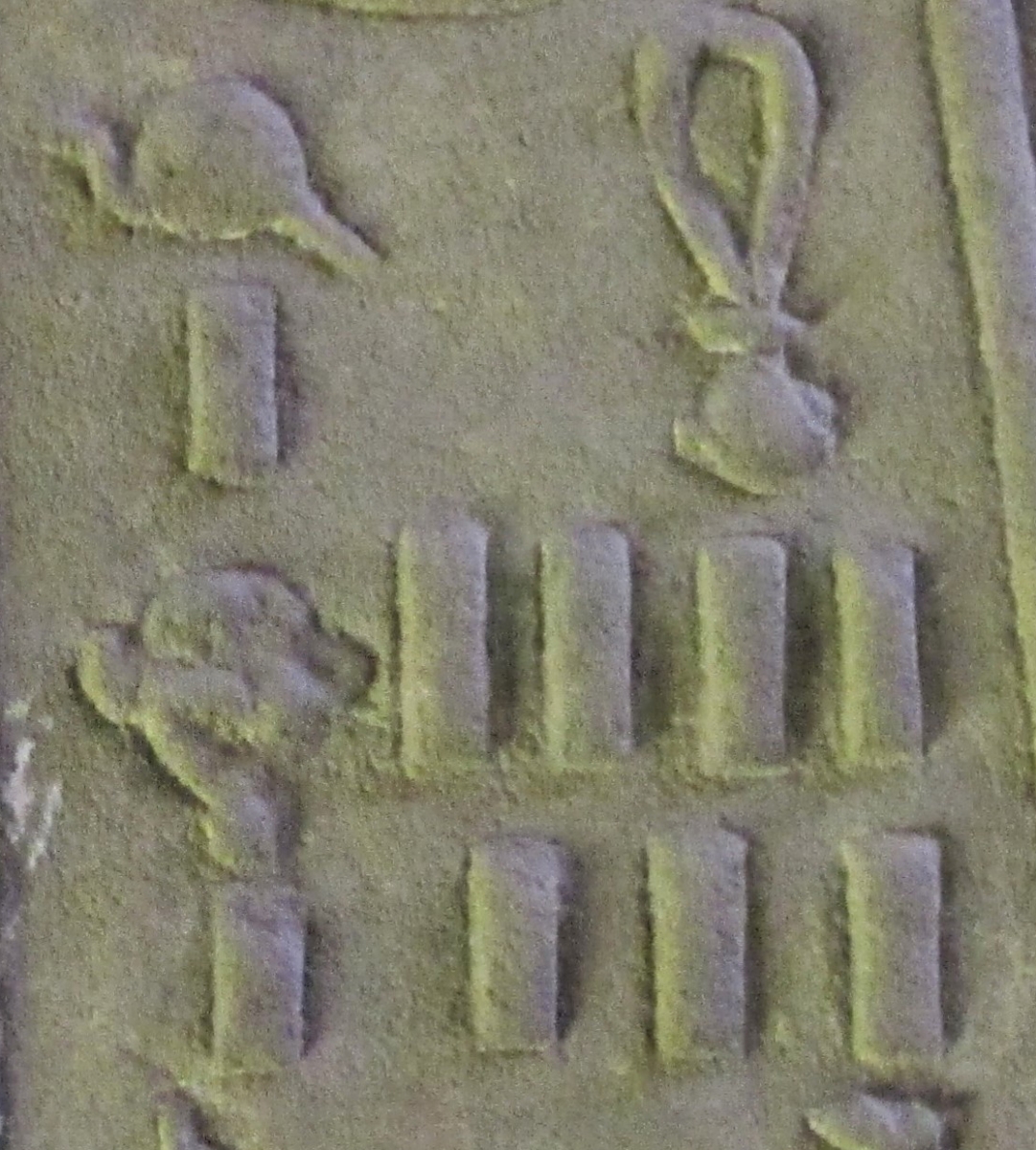- About MAA
- Membership
- MAA Publications
- Periodicals
- Blogs
- MAA Book Series
- MAA Press (an imprint of the AMS)
- MAA Notes
- MAA Reviews
- Mathematical Communication
- Information for Libraries
- Author Resources
- Advertise with MAA
- Meetings
- Competitions
- Programs
- Communities
- MAA Sections
- SIGMAA
- MAA Connect
- Students
- MAA Awards
- Awards Booklets
- Writing Awards
- Teaching Awards
- Service Awards
- Research Awards
- Lecture Awards
- Putnam Competition Individual and Team Winners
- D. E. Shaw Group AMC 8 Awards & Certificates
- Maryam Mirzakhani AMC 10 A Awards & Certificates
- Two Sigma AMC 10 B Awards & Certificates
- Jane Street AMC 12 A Awards & Certificates
- Akamai AMC 12 B Awards & Certificates
- High School Teachers
- News
You are here
An Ancient Egyptian Mathematical Photo Album: Caveats
The Egyptian hieroglyphic script consists of over 1000 characters representing either a phonetic sound, an ideogram for a specific concept, or a determinative at the end of a word to clarify its meaning. Not surprisingly, there are some challenges to reading hieroglyphs. For example, there is no punctuation to separate sentences or clauses, although comprehension is aided by knowing that verbs occur at the beginnings of sentences. Although determinatives follow some words, there are nonetheless cases where it is difficult to tell when one word ends and the next begins. Variations can occur among the symbols, since they were created by various scribes or carvers over four millennia. Also, there are places where the hieroglyphs have been damaged. In addition, there are symbols which have different meanings depending on the context. We will discuss several such hieroglyphs related to mathematical notation.
First, the mouth symbol that is used to denote a unit fraction has several other meanings. It is part of the hieroglyphic alphabet representing the letter “R”, and it is also used as a stand-alone word meaning “to” a place (there is another word for “to” a person) or “by”. Later, in Figure 14, the mouth symbol is used both to denote a unit fraction and as “by”.
Also in Figure 14, we see a hieroglyph that looks like the side of a statue base used to mean “at” or “from” or “side”, while a smaller version represents \(\frac{1}{2}\). (Compare with Figure 38.)
The coiled rope symbol representing 100 is also used as a replacement for the quail chick hieroglyph representing the letter “W” or the sound “oo”.
While the stroke can represent the number one, it appears much more often as a determinative following a hieroglyph to indicate it is being used as an ideogram, i.e., a face hieroglyph followed by a stroke means either “face” or something related to a face. The determinative stroke is typically shorter than the stroke for the number 1, as can be seen in Figure 12.

Figure 12. Example of a stroke used as a determinative (twice on the left)
and as a numeral (7 on the right) on a wall in the Edfu Temple (237–57 BCE).
The number in Figure 13 could easily be mistakenly read as 1,333,331, instead of correctly as 1,333,330. Upon closer examination, one sees the stroke is not part of the numeral but is actually an ideogram determinative following the heart hieroglyph.

Figure 13. Example of a stroke used as a determinative and not a numeral on a wall in the Edfu Temple (237–57 BCE).
Three strokes also commonly occur in hieroglyphic text to denote that the preceding word is a plural. Figure 18 shows an example of three strokes indicating a word is plural. Two slanted strokes are also used to denote a noun is plural, specifically in the case of two objects.
Cynthia J. Huffman (Pittsburg State University), "An Ancient Egyptian Mathematical Photo Album: Caveats," Convergence (April 2022)




